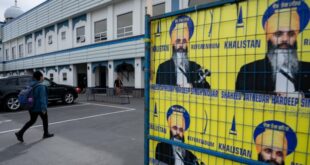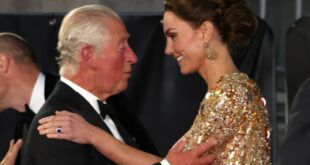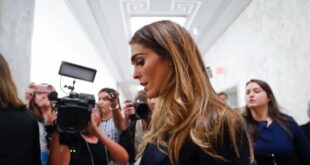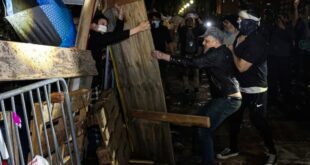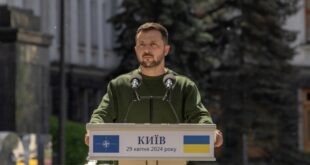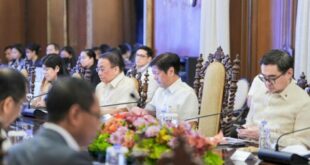Haejin thinks her sister Mimi is beautiful — and couldn't care less about stigmas

This First Person column is written by Jina Lee, a mom of two girls including an autistic preschooler. It was originally published in October 2021. World Autism Day is marked on April 2 annually. For more information about CBC's First Person stories, please see the FAQ.
The disability community is the largest minority group in the world and yet, like most of my peers, I grew up isolated from this community. My classrooms and social groups were ethnically, culturally, and socio-economically diverse, but I can't recall a single classmate who had a disability. The great tragedy of this siloed upbringing is that the first disabled person I ever loved was my daughter Mimi.
Mimi is an affectionate non-speaking autistic preschooler with a delicate face framed by a most unfortunate pandemic home haircut. She adores animals and physics and — do not fight me here — she is objectively the cutest human alive.
Mimi was diagnosed at the age of two and the first time the word "autism" was spoken, I was filled with fear. I now know that this fear was based in my ignorance and ableism. I have since begun a journey of identifying and shedding my unconscious prejudice, mostly through the generous teachings of the autistic community, including autistic parents of autistic children.
I have also found the most unexpected teacher in Mimi's younger sister, Haejin.
Haejin is neurotypical, meaning she is typically developing for a child her age. She is an assertive, sociable, and chatty toddler with an equally tragic home haircut. She helps me unravel decades of learned prejudice because she has not yet learned that our society stigmatizes disability.
When Mimi began to use a speech-generating tablet (officially known as an augmentative and alternative communication device or AAC), I was concerned it would make her stand out. Contrarily, Haejin was so offended that Mimi "got to" use an AAC that we had to purchase a second tablet and install the same speech program for her.
Haejin taught me that assistive devices were worthy of envy and that difference is desirable. Both sisters can be seen proudly carrying their AACs, sporting noise-cancelling headphones and matching chewelry necklaces.
Mimi often runs away when Haejin invites her to play. At first I was saddened that Haejin would feel rejected and lonely. But she challenges the way I define affection. Haejin knows Mimi loves her back because Mimi shares her snacks. She knows Mimi's love because Mimi laughs hysterically at Haejin's dancing.
In Haejin's own words, "Mimi loves Haejin. Mimi is beautiful."
Teaching inclusivity is child's play
Like Haejin, my friends' children know Mimi is different and they consider her differences nothing but curious and wonderful. They are gentler around her. When they run, they wait for her to catch up. They follow her around and compete for her attention.
Inspired by Haejin and Mimi's friends, my friend, who is also a play-therapist, and I created inclusive play groups where neurotypical and neurodiverse (which includes autistic) children play together in a space created for the autistic child.
This summer, my cousin and I piloted an inclusive summer school program for kids aged three to five.
The children asked questions about the differences of their peers, which the teachers and I answered with variations of "everyone is different, isn't that wonderful?" This explanation was sufficient to satisfy their curiosities and they went immediately back to play.
Accessible play is the great equalizer. So long as the environment is accessible and child-led, there is no context in which differences can be seen as a 'bad' thing. Disability is but another form of human diversity.
As I try to uproot my learned ableism, I am in awe of how young children innately know how to be inclusive. I, too, must have known this but without diverse friendships to bring it to life, the knowledge has long slipped away. This is why it is so important to provide young children every opportunity to play with children who are different from them. This includes making friends in the disability community.
Any day now, the children in our programs will hear the words "disabled" and "autistic" as their own identifier or that of their peers. My hope is that these words will be understood within the context of the friendships they have experienced over the last year.
As for our family, Mimi knows she is autistic and very soon, I will speak the word "autism" to my little Haejin. I know Haejin will receive the word in joy and without fear. Because, unlike her mother, Haejin loved an autistic person before learning of the stigma attached to disability.
Do you have a compelling personal story that can bring understanding or help others? We want to hear from you. Here's more info on how to pitch to us.
*****
Credit belongs to : www.cbc.ca
 MaharlikaNews | Canada Leading Online Filipino Newspaper Portal The No. 1 most engaged information website for Filipino – Canadian in Canada. MaharlikaNews.com received almost a quarter a million visitors in 2020.
MaharlikaNews | Canada Leading Online Filipino Newspaper Portal The No. 1 most engaged information website for Filipino – Canadian in Canada. MaharlikaNews.com received almost a quarter a million visitors in 2020.

